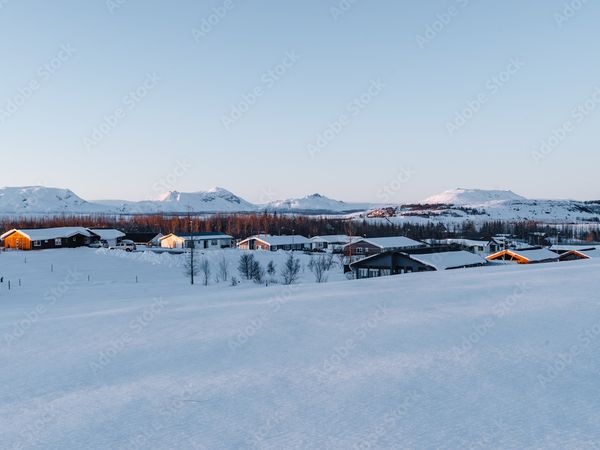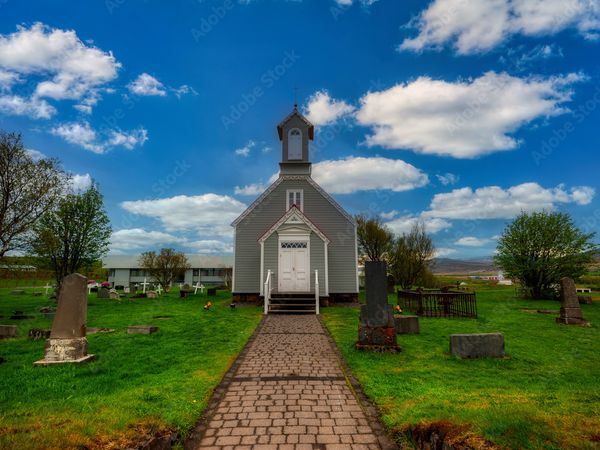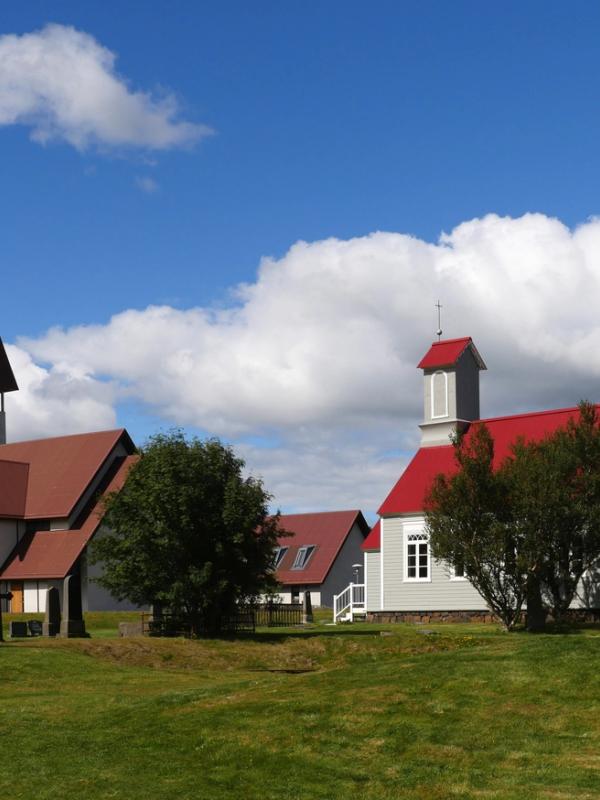
Exploring Reykholt, where nature and history come together
There’s a place in West Iceland that might be difficult to find on a map, but that is a fantastic surprise. Reykholt is a tiny village in the valley of Reykholtsdalur, in the Borgarfjörður region. It may seem uninteresting, but those who come will find a fascinating mix of history, Icelandic culture, and amazing natural surroundings.
This town is mainly known for being where Snorri Sturluson, Iceland’s most celebrated historian and poet, lived. Reykholt used to be an active intellectual hub in medieval times, and now invites visitors to take a step back in time and connect with the poet’s legacy. But not only that. This small village is located in an area with hot springs, waterfalls, forests, and mountains.
Key Takeaways
- Reykholt is a village located in West Iceland.
- Snorri Sturluson, Iceland’s most prominent poet and historian, lived in Reykholt.
- There’s a cultural center called Snorrastofa about the life and works of the poet.
About Reykholt
Iceland is a country with a huge diversity in many senses. First of all, at a natural level. The number of different landscapes and ecosystems that can be found in the country is extremely large. Then, the culture of the country is quite intriguing and unique, shaped by the island’s unique location and different cultural influences throughout history. In West Iceland, we can find Borgarfjörður, a wide and beautiful fjord. The area around it is a hub that perfectly mixes amazing and diverse natural spaces with a deep connection with Icelandic roots and heritage.
The continuation of this fjord inland is the green and beautiful Reykholtsdalur Valley, carved by the Reykjadalsá River and surrounded by rolling hills and lava fields. There sits Reykholt, a small village that, at first, can go unnoticed because of its modest size. However, it’s a place where history and nature converge in a beautiful setting, and that definitely should be on your radar during your trip to Iceland.
In spite of having a population of just 60 residents, this small community is well known in Iceland, and it’s an important cultural center. That’s mainly because this is where Snorri Sturluson, a chieftain from the 12th and 13th Centuries, lived most of his life. He’s mainly known as a poet, scholar, and historian whose works have shaped our understanding of Norse mythology and medieval European history. In fact, during the Middle Ages, Reykholt became an important cultural center, home to one of Iceland’s most prestigious schools.
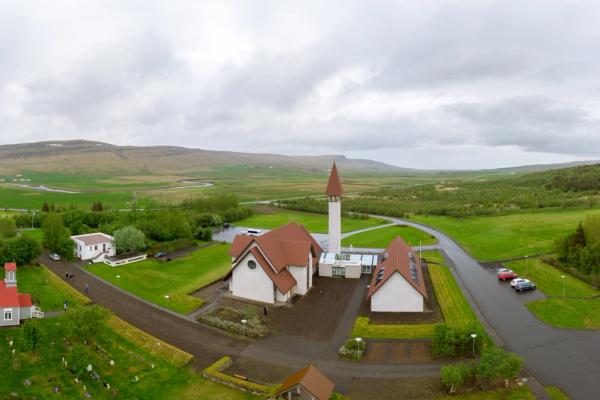
Culture & Things to do There
The village’s historical significance can still be felt at Snorrastofa, a cultural and medieval research center dedicated to Snorri Sturluson. Established in 1988, this museum has an interesting exhibition on Snorri’s life, showcasing different artifacts that were found during different archeological digs. The center also houses a library and research facilities. For years, it has attracted scholars and researchers from all over the world, but it’s also a very attractive stop for curious travelers interested in history and Icelandic culture.
Not far from it, there’s a place where one can get to know the Icelandic bathing culture, which dates well back in the past. Snorralaug is a geothermal pool that has existed since the 10th century. It is considered to be one of Iceland’s oldest preserved structures. Visitors can explore the pool and the tunnel used by Snorri to go to the bath from his fortified farmstead.
Reykholt’s charm goes well beyond his historical and cultural roots, though. The surrounding landscapes are full of geothermal springs, waterfalls, lava fields, and caves, making it a collection of many of the different ecosystems that make up Iceland. There’s even a huge glacier in the region. This blend of cultural center and amazing natural environment makes Reykholt a fascinating destination for all types of travelers.
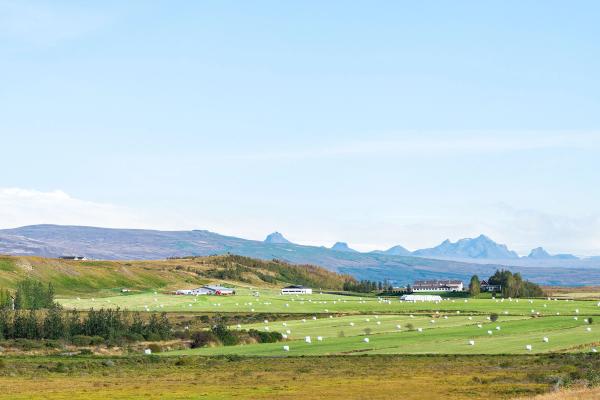
Where’s Reykholt and How to Get There
Reykholt is located in West Iceland, approximately 108 kilometers (67 miles) north of Reykjavik. This makes it accessible from the capital on a day trip, but can also be included as a stop on a longer itinerary through this region and the area surrounding the Borgarfjörður fjord. For example, if you’re going to the majestic Snæfellsnes Peninsula, it’s quite convenient to take a little detour and stop at this historic site. Whatever your choice is, there’s no better way to get to Reykholt than renting a car. Public transport is very limited.
To reach Reykholt by car from Reykjavik, start by taking the famous Ring Road (whose official name is Route 1) heading north. After 70 kilometers (43.5 miles), just before crossing the bridge that spans the Borgarfjörður fjord and gets to Borgarnes, turn right onto Route 50. Continue on it for another 30 kilometers (18 miles) and then take Route 518, which leads to Reykholt. It takes about 1.5 hours without stops. The roads between Reykholt and Reykjavik are paved and well-maintained. There’s a free parking area in town, with enough space. From the parking area, Snorralaug and the Snorrastofa exhibition are just a short walk away, less than 100 meters.
The Weather in Reykholt
In Iceland, the weather is famously unpredictable and constantly changing. The country is not as cold as other regions of the world in similar latitudes, but it’s certainly not warm. The west of the country, where Reykholt is located, is not as cold as the center or the north of Iceland, but it’s usually wetter and windier. Here’s what you can expect each season:
Spring (April and May)
After the long winter, spring in Reykholt brings mild temperatures, ranging from 0°C to 7°C (32°F to 45°F), with occasional rain showers and spells of sunshine. There’s still snow lingering from winter, but the fields begin to wake up and the plants to bloom. The days get longer week after week, perfect for exploring the historic sites and the surrounding natural attractions. However, the weather remains highly variable, so it’s essential to be prepared for everything.
Summer (June to August)
Summer is Reykholt’s warmest season, with temperatures between 8°C and 15°C (46°F to 59°F). It’s more common to have clear skies, and the daylight hours are really long, with almost 24 hours of natural light by the last two weeks of June. It’s a good idea to wear a waterproof jacket, as rain can hit suddenly.
Autumn (September and October)
This season arrives with a gradual drop in temperatures, moving between 2°C to 10°C (36°F to 50°F). The same applies to the daylight hours, which get shorter each week. Rain and wind become more frequent, and the first days of snow can appear by late October. The fields around Reykholt get beautiful colors, with shades of red, yellow and orange. The Northern Lights season begins around this time, and Reykholt can be a great place to see them if the night is clear.
Winter (November to March)
Winter in Reykholt is cold and long, with temperatures ranging from -5°C to 3°C (23°F to 37°F). The valley is covered in snow, creating an image that seems out of a postcard. Strong winds are common, and the roads can become icy, so it’s important to drive with caution and check the road status before traveling. The chances of seeing the Northern Lights increase, especially in January and February.
Snorri Sturluson: Iceland’s Literary Giant
Snorri Sturluson (1179–1241) is one of the most critical figures in Icelandic and Nordic history. He is renowned for his contributions to literature, politics, and scholarship. Snorri was born in Hvammur, West Iceland, son of Sturla Þórðarson the Elde, and was part of the wealthy and powerful Sturlungar clan. However, he was fostered by Jón Loftsson, a Norwegian nobleman, when he was four, and raised at Oddi, a cultural center. There, he received an education that shaped his intellectual interests.
By 1206, he had settled in Reykholt, transforming it into a fortified estate and intellectual center. There, he became chieftain and became an important figure at the national level during the turbulent politics of the Sturlung Era. In fact, he was elected twice as lawspeaker at the Alþingi, the Icelandic parliament. However, he was mostly interested in history and literature, fields that he cultivated from his farmstead in Reykholt. His wealth and connections, including ties to Norway’s royal family, made him an influential but controversial figure. He was assassinated in 1241 by a Norwegian death squad.
Snorri’s literary works are his most important legacy. His Prose Edda, a work on Norse mythology, preserved stories of gods like Odin, Thor, and Loki, which might otherwise have been lost to oral tradition. This text not only codified Nordic poetry but also inspired many modern literary works. His Heimskringla, a chronicle that tells the story of Norwegian kings from the 9th to 12th centuries, is an important work of medieval European history. Snorri is also believed, although there are disputes, to have authored Egil’s Saga, a tale about Viking life in medieval Iceland, which was very influential to several Icelandic sagas.
In Reykholt, Snorrastofa celebrates his legacy with exhibitions, guided tours, and a shop selling his works and articles related to him. Literature and history enthusiasts are attracted by his life and works, but it’s also a very interesting place for almost everyone.
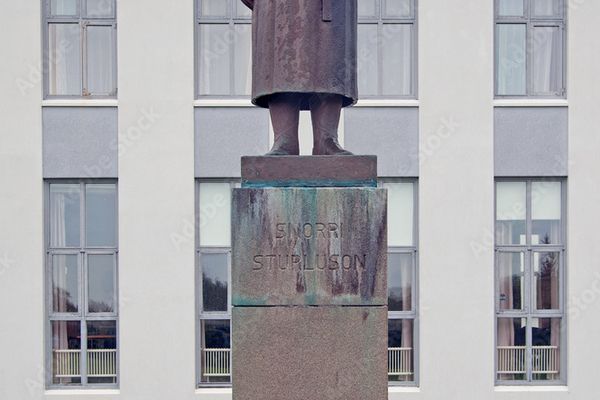
What to See and Do Near Reykholt
By itself, Reykholt is an attractive destination, blending history and culture with beautiful natural surroundings. There’s a lot to see and do near the town to make the experience even more complete.
Barnafoss
This beautiful waterfall is just 7 kilometers (4.3 miles) from Reykholt. Barnafoss, or “Children’s Falls,” is on the Hvítá River, and it’s considered to be one of the most enchanting waterfalls in Iceland. Its turbulent waters carve through a narrow gorge, creating a striking contrast to the landscape around. There’s a short trail from the parking area that leads to a viewing platform, perfect for photos. The waterfall takes its name from a tragic legend that says that two children drowned here after falling from a natural stone bridge.
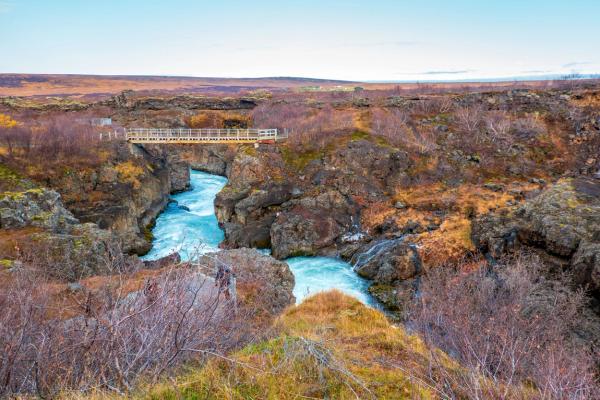
Víðgelmir
Víðgelmir is one of Iceland’s largest lava tubes, stretching 1.5 kilometers (0.9 miles). There are guided tours that take visitors underground to see the cave’s colorful interior, illuminated by LED lights to highlight stalactites and lava formations. It’s a fascinating journey into Iceland’s volcanic past.
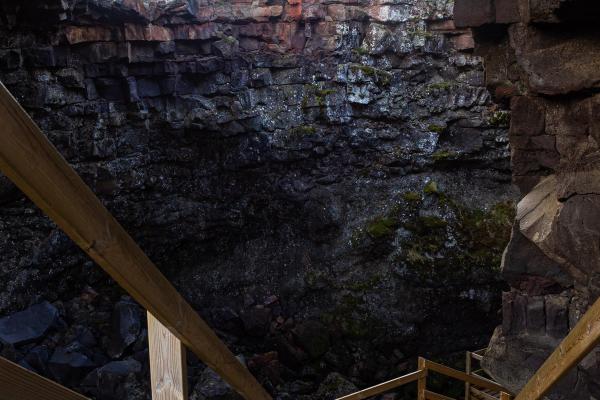
Húsafell
There are not many forests in Iceland, and Húsafell hosts one of the most beautiful. It’s a charming village known for its natural beauty and recreational opportunities. Surrounded by forests and mountains, it’s a hub for hiking, camping, and visiting the nearby Langjökull glacier.
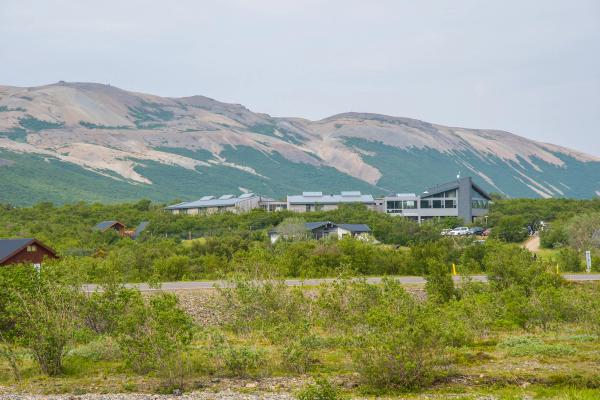
Hraunfossar
Hraunfossar, which means “Lava Falls” in Icelandic, is a mesmerizing series of waterfalls flowing from the Hallmundarhraun lava field into the Hvítá River. The crystal-clear water seems to emerge from nowhere, falling over volcanic rocks into the turquoise river below. There’s a short walkway from the parking area leading to different viewing platforms. It’s a great place to take photos.
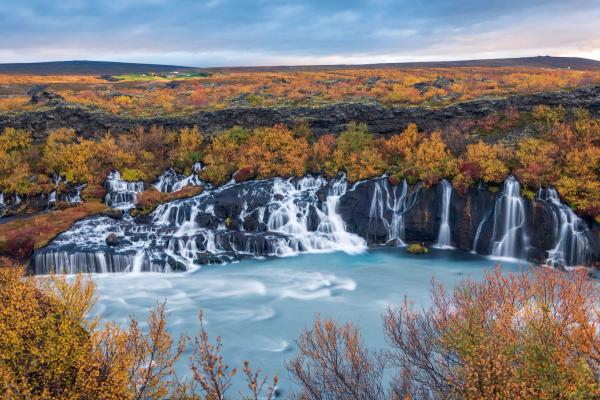
Deildartunguhver
A bit further west of Reykholt, Deildartunguhver is Europe’s highest-flowing hot spring, producing 180 liters of steaming water per second. This astonishing amount of water is used to power different towns and cities in West Iceland, such as Borgarnes and Akranes. It’s a fantastic example of geothermal activity in Iceland. The water is too hot for bathing, but that’s something you can do in the nearby Krauma Spa, which uses waters from Deildartunguhver.
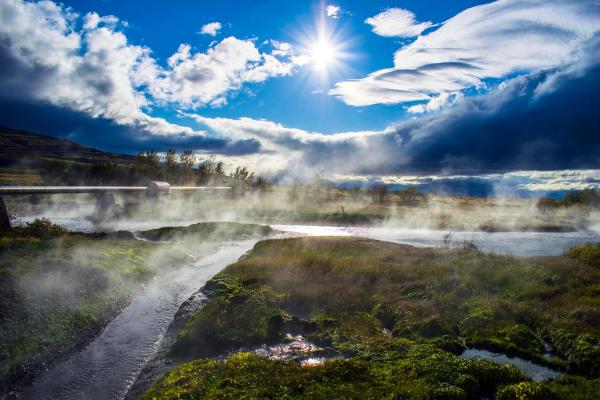
Krauma Spa
Bathing culture runs strong in Iceland, and it’s something all visitors must try, at least once. And near Reykholt, you have a marvelous option. Krauma is a modern spa that has hot and cold tubs, steam baths, a relaxation pool, and a restaurant that serves authentic Icelandic food. It’s recommended to book in advance, especially in summer, which is peak season.
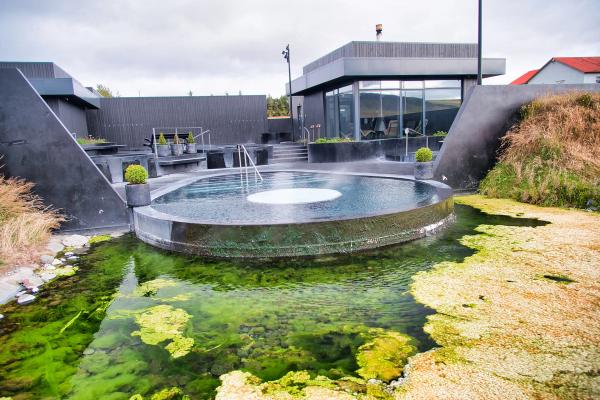
Langjökull
Iceland has been shaped by different natural forces, and glaciers are one of the most visible ones. The country’s second-largest glacier, named Langjökull, which can be translated as “long glacier,” is close to Reykholt. It offers thrilling activities like snowmobiling, glacier hiking, or visiting the man-made tunnel, the largest of its kind in the world. It can also be visited year-round, while the rest of the ice caves in Iceland are only accessible in winter. Most of the guided tours and activities depart from Húsafell, which is 24 kilometers (15 miles) from Reykholt.
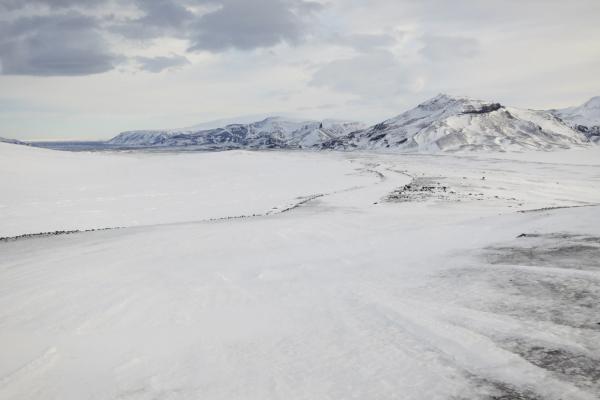
Where to Stay in Reykholt and Nearby
Reykholt and its surrounding areas offer a range of different accommodations, from cozy guesthouses to modern hotels, catering to various budgets and preferences. Here are six excellent options:
Fosshotel Reykholt
Located in the heart of Reykholt, this great country hotel combines rustic charm with modern comforts. Guests can enjoy a spa with indoor and outdoor facilities, a restaurant serving traditional Icelandic cuisine, and free Wi-Fi. Its proximity to Snorrastofa and Snorralaug makes it ideal for those interested in the history of Reykholt and Snorri Sturluson. They even have pet-friendly rooms and a charging station for electric vehicles.
Þórishús Guesthouse
Also inside Reykholt, Þórishús offers a peaceful retreat with cozy rooms and views of the surrounding countryside. This family-run guesthouse provides a homely atmosphere, with breakfast included and access to shared kitchen facilities. It’s perfect for travelers seeking an affordable, rural escape.
Grímsstaðir
Just 2 kilometers (1.2 miles) from Reykholt, this is a great option for families or large groups. It has five bedrooms, garden, BBQ area, and free Wi-Fi, with great mountain views. The serene setting and proximity to Hraunfossar make it a great base for exploring the region.
Guesthouse Steindórsstaðir
This family-run guesthouse is located on a farm, surrounded by a green valley and views of the Langjökull glacier. It’s perfect for those wanting to immerse themselves in nature. The hosts serve breakfast and would share tips for exploring the area.
Hótel Húsafell
This upscale hotel in Húsafell blends luxury with nature. It features stylish rooms, a geothermal pool, and a restaurant that prepares Icelandic recipes using local ingredients. It’s a very popular place in Iceland, highly rated, and every Saturday evening the staff organize a bonfire and all the guests are invited.
Travel Tips
- Plan for the Weather: Iceland’s weather can change rapidly, so pack layers, waterproof clothing, and sturdy shoes, regardless of the season
- Book Snorrastofa Tours in Advance: Guided tours and cultural activities at Snorrastofa require pre-booking, especially for groups. Check their website for schedules and availability.
- Download the Snorrastofa App: The outdoor and indoor audio guides, available in multiple languages, can make your visit even better with detailed insights about Snorri’s life and Reykholt’s history.
- Check Road Conditions: The roads leading to Reykholt are in good shape, but weather events can close some roads, especially in winter. Check the road status before setting off.
- Visit in July for Reykholtshátíð: This is an annual chamber music festival held in Reykholt’s church. If you can adapt your plans, it’s a cultural highlight.
- Respect Historical Sites: Snorralaug is a protected site and bathing is prohibited. Stick to designated paths to preserve the area’s archaeological integrity.
- Combine with a Silver Circle Tour: The Silver Circle is a scenic route in this area that connects some of the best to see and do here. Take the opportunity to see as much as you can.
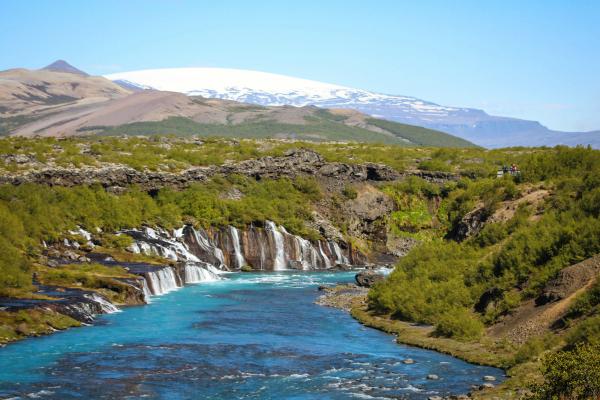
Conclusion
Some places are just a great mix of the best of the natural and the human worlds. At Reykholt, they combine to create a fantastic destination. History comes alive at Snorrastofa, where you can learn about one of the most important historical figures in Iceland. But not only that. The area around this small but charming village is full of amazing natural monuments that will make your trip unforgettable.


